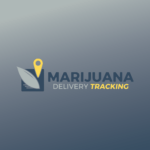1. Uber’s Pilot in Cannabis Delivery
Uber’s entry into cannabis isn’t hypothetical anymore—it’s happening. Back in 2021, Uber launched pilots with Toronto’s Tokyo Smoke through Uber Eats in Canada, laying early groundwork for real‑time menu availability, route transparency, and delivery ETAs. These pilots provide a strong example of how gig platforms can bring proven tracking systems into cannabis—even though full U.S. entry awaits federal legalization. Still, the tech is here.
2. “Uber for Weed” and Efficiency Gains
California’s Eaze—often dubbed the “Uber for weed”—grew rapidly by mirroring ride-share’s seamless UX: order tracking, estimated arrival, and fast checkout. And real-world operator tales say Uber-like ordering systems boost conversion: customers often choose add-ons rather than abandon partially filled carts—a behavior typical in food delivery apps.
3. Meadow’s Mobile Dispensaries
Cannabiz Media reports that Meadow experimented with “Dynamic Delivery” in California—vehicles loaded with pre‑approved stock, visible live in-app, letting customers order from what’s actually in the van. This real-time availability tracking is a direct nod to logistics systems pioneered by Uber Eats and Amazon.
4. Amazon’s Disruption-Ready Infrastructure
Amazon may not sell cannabis yet, but it’s laying groundwork. In 2021, it publicly backed federal legalization, lobbied Congress, and dropped cannabis from pre‑employment screening processes. Most importantly, its patented track‑every-parcel model can map directly onto cannabis delivery: transparent tracking, same-day fulfillment, branded packaging—all ready for adaptation.
5. Pandemic-Fueled Digital Acceleration
The COVID-19 lockdown supercharged cannabis delivery. By late 2020, 79% of dispensaries had launched delivery or curbside pickup; cannabis deliveries soared 300% from March through year-end. US sales reached $15 billion in 2021, with delivery playing a central role.
6. POS Platforms Bridging the Gap
Tech providers like Dutchie and Onfleet stepped into the breach, offering licensed seed‑to‑sale compliance, inventory tracking, route optimization, and customer notifications. Their platforms echo Uber’s dashboard-driven driver operations and Amazon’s fulfillment tracking—with cannabis-specific regulatory controls layered in.
Final Take
Cannabis delivery is no longer the wild frontier—it’s evolving rapidly, thanks to big-tech influences:
- Real-time product visibility, inspired by Uber Eats and Meadow.
- Live, courier-level tracking, honed by Uber and Amazon.
- Regulatory-friendly POS integration, driven by Onfleet and Dutchie.
Once federal legalization clears, big players like Amazon and Uber will likely roll out standardized tracking and fulfillment systems, creating smoother consumer experiences and better margins for operators.

